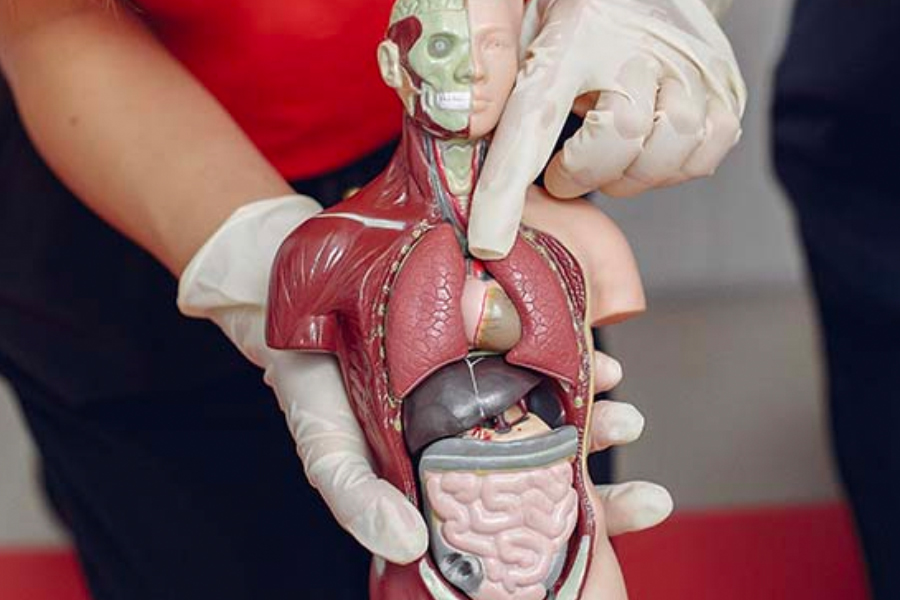Humans are indeed a marvel creature. Many cells and organs located in their position work in a manner and form a system. All of the body systems work in order and are able to adapt when there are changes in the body or changes to the environment that affect the way the body works. This helps humans to live and survive throughout their life. If you ask a doctor, you may be surprised to know that there is disease that causes organs in the body located on the different side of the body compared to another normal human. This is known as dextrocardia.
Dextrocardia is defined as the heart pointed towards the right side of the chest. In a normal human, the heart is pointed towards the left. This means that dextrocardia causes the heart to be located in the right side of the chest (thoracic cavity) which is opposite of the heart’s position in a normal human. Dextrocardia is a rare congenital disorder that occurs at birth. It is usually associated with other birth defects. It can occur by itself or be accompanied with organs positioned in reversal. In most cases, dextrocardia is diagnosed accidentally.
It is not known the exact causes leading to dextrocardia but one thing for sure, it happens during the fetus develops while in pregnancy. The abnormal position of the organs during the embryonic development may have caused these changes. Inherited disorders such as Kartagener syndrome and heterotaxy can cause dextrocardia. Kaartagener syndrome, also known as primary ciliary dyskinesias, is a rare genetic disorder comprising chronic sinusitis (inflammation of the space lining the inside the nose and head) situs inversus (reversed internal organs) and bronchiectasis (permanent enlargement of the always of the lung). Heterotaxy is a rare condition causing the organs in the chest and abdomen to form abnormally, positioned wrongly or missing.
Dextrocardia is a very rare condition as the occurrence of this is around 1 in 12 000 people. Both boys and girls have the same probability of being born with dextrocardia. There are several major types of dextrocardia. In isolated dextrocardia, only the heart is on the opposite side of the body and this is very rare. Dextrocardia situs inversus not only involves the heart to be positioned on the right, but also involves some of other organs to be on the opposite side of the body such as the liver on the left side instead of the right side and spleen on the right side instead of left side as the normal positions. In dextrocardia situs inversus totalis, all the vital organs in the chest and abdomen are on the opposite side of the body compared to the normal location. Dextrocardia often presents with other heart defects. This may include:
- Double outlet right ventricle (aorta connects to the right ventricle)
- Endocardial cushion defect (poorly formed wall separating the 4 heart chambers)
- Ventricular septal defect (presence of abnormal hole in the wall separating right and left ventricles)
- Single ventricle (normal heart have two ventricles)
- Pulmonary stenosis (narrowing of the pulmonary valve)
- Transposition of the great vessels (the big blood vessels of aorta and pulmonary artery are in switched position)
Many people with dextrocardia do not realise they have this condition since there are no symptoms. Dextrocardia may be found out accidentally when doctors chest the chest or heart imagine examinations to treat other health problems. One of the prominent signs of dextrocardia is the maximum heart sounds or the heart sounds are loud on the right side instead of the left. In severe case, babies with heart defects often shows symptoms such as inability to gain weight, chronic infections affecting lungs and airways, unexplained continual exhaustion, jaundice symptoms such as yellow-tinged skin or to the white eyes and blue-tinted skin that is visible around fingers and toes which indicates oxygenation in the body is compromised.
Parents that have children with dextrocardia may be worried if their child can live. The good thing is, patients with isolated dextrocardia have a normal lifespan without any complications. Dextrocardia that occurs with other conditions may have had a serious effect on the hearts and other vital organs. It is usually not a life-threatening condition even if it does lead to serious complications. It is important for patients with dextrocardia to get treated and receive medical care.
Treatment depends on the type of dextrocardia and its severity. Dextrocardia with no symptoms usually does not need any surgery. Dextrocardia with heart defects will be considered for surgical reconstructions or heart transplantations. Supportive treatment such as prescription cough medication and antibiotics is common in those with Kaartagener syndrome to help manage their symptoms and infections respectively. Medications to help optimise heart functions may be given.
In essence, a person can live with dextrocardia. It is indeed a rare disease that is so often always diagnosed accidentally unless in infants with symptoms such as from heart defects and other vital organs misalignment. Many people have no symptoms but in those with symptoms, treatment can help them live better and healthily.


